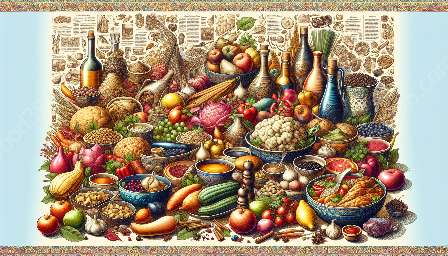Throughout history, the use of herbs and spices has played a crucial role in the development of culinary cultures around the world. This article will delve into the intriguing journey of herbs and spices, exploring their significance in different culinary traditions, their evolution alongside cooking techniques and tools, and their role in shaping food culture.
Origins and Early Uses of Herbs and Spices
The use of herbs and spices in cooking can be traced back to ancient civilizations. Early humans discovered the aromatic and flavorful properties of various plants and began incorporating them into their diets. In regions such as the Indus Valley, ancient Mesopotamia, and ancient Egypt, archaeological evidence suggests that herbs and spices were utilized not only for culinary purposes but also for medicinal and religious practices.
Evolution of Cooking Techniques and Tools
The evolution of cooking techniques and tools played a significant role in the development and utilization of herbs and spices. As ancient civilizations advanced, innovations in cooking methods, such as the invention of pottery, grinders, and mortars and pestles, enabled people to process and utilize herbs and spices more effectively. These advancements also contributed to the refinement and diversification of culinary traditions, allowing for the creation of more complex and flavorful dishes.
Diversity of Herbs and Spices in Culinary Traditions
As culinary cultures evolved, the use of herbs and spices became deeply ingrained in the traditions of various regions. The tropical climates of Southeast Asia, for example, gave rise to the cultivation of a wide array of aromatic herbs and spices such as lemongrass, galangal, and turmeric, which are fundamental to the cuisine of countries like Thailand, Indonesia, and Malaysia. In the Mediterranean, the use of herbs like oregano, basil, and thyme, as well as spices such as cinnamon and cumin, became emblematic of the region's culinary identity.
Origin and Evolution of Food Culture
The incorporation of herbs and spices into cooking practices also played a crucial role in shaping the food culture of different societies. As trade routes expanded and globalization took hold, the exchange of culinary knowledge and ingredients led to the assimilation and adaptation of herbs and spices into diverse food cultures. This fusion of flavors and techniques not only expanded culinary horizons but also contributed to the formation of unique and vibrant food traditions.
The Significance of Herbs and Spices
Herbs and spices hold cultural and symbolic significance, often intertwining with religious and social customs. For example, the use of saffron in Persian cuisine is not only valued for its distinct flavor but also carries historical and ritualistic connotations. Similarly, the inclusion of certain herbs and spices in traditional Chinese medicine reflects a holistic approach to healing and wellbeing, demonstrating the profound impact of herbs and spices beyond the realm of cooking alone.
Continued Influence and Innovation
Today, the use of herbs and spices continues to evolve, as global interconnectedness allows for the sharing and adaptation of culinary practices across different cultures. Furthermore, advancements in technology and agriculture enable the cultivation and preservation of herbs and spices on a larger scale, ensuring their availability and accessibility in modern culinary landscapes.
In Conclusion
The development of herbs and spices in different culinary cultures has been a rich tapestry woven into the fabric of human history. From their early uses in ancient civilizations to their integral roles in shaping modern food culture, herbs and spices have left an indelible mark on the diverse and colorful world of cuisine. Their evolution alongside cooking techniques and tools mirrors the ingenuity and creativity of human societies, showcasing the enduring value of these natural wonders in the realm of gastronomy.


